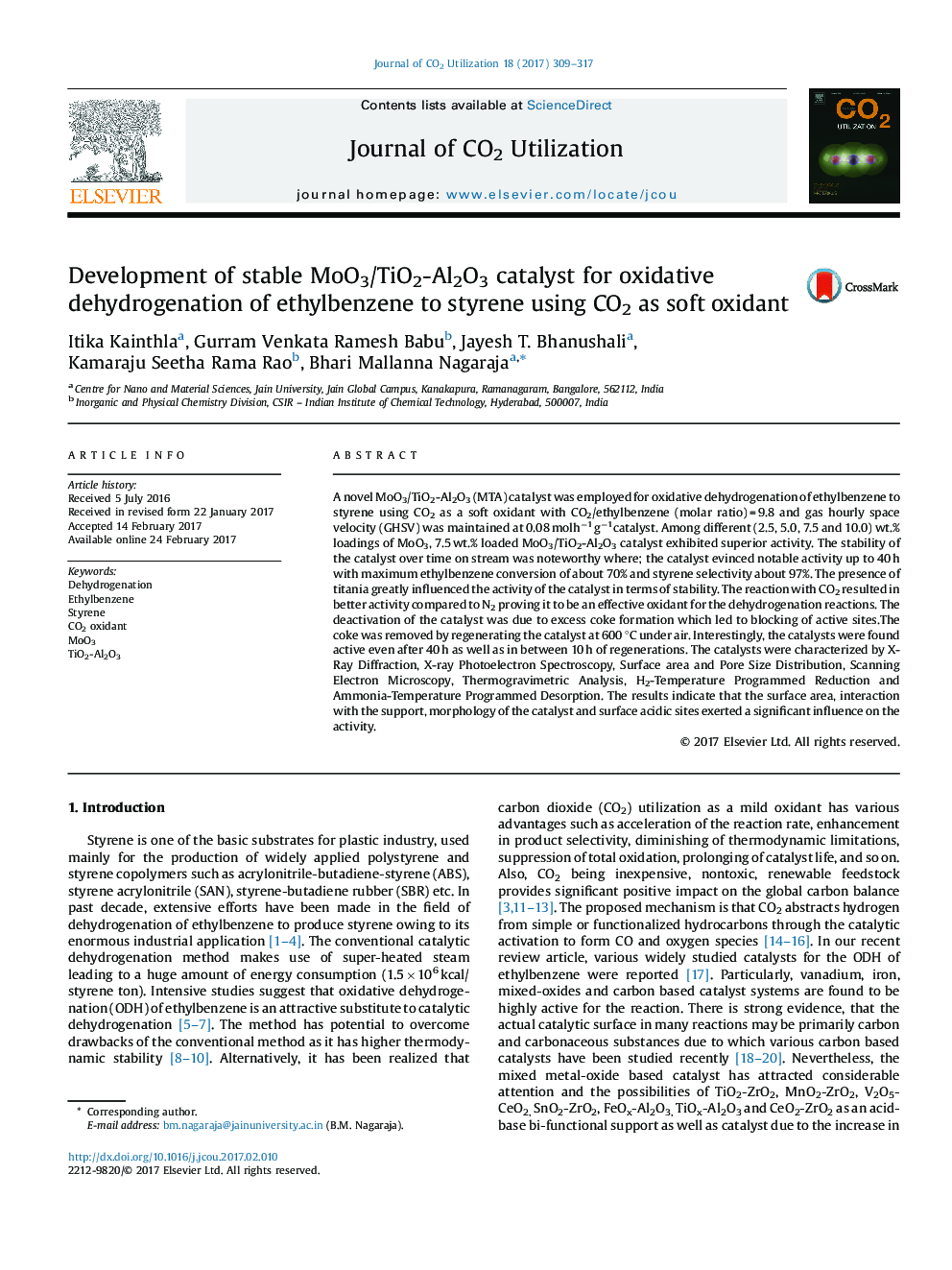| کد مقاله | کد نشریه | سال انتشار | مقاله انگلیسی | نسخه تمام متن |
|---|---|---|---|---|
| 6456252 | 1419844 | 2017 | 9 صفحه PDF | دانلود رایگان |

- Versatile MoO3/TiO2-Al2O3 catalyst for dehydrogenation of ethylbenzene to styrene.
- CO2 was used an mild oxidant for improved activity.
- The fresh and regenerated catalyst was stable up to 40Â h.
- The presence of titania greatly influenced the stability of the catalyst.
- Catalyst deactivation was due to coke formation which blocked active Mo6+sites.
A novel MoO3/TiO2-Al2O3 (MTA) catalyst was employed for oxidative dehydrogenation of ethylbenzene to styrene using CO2 as a soft oxidant with CO2/ethylbenzene (molar ratio) = 9.8 and gas hourly space velocity (GHSV) was maintained at 0.08 molhâ1 gâ1catalyst. Among different (2.5, 5.0, 7.5 and 10.0) wt.% loadings of MoO3, 7.5 wt.% loaded MoO3/TiO2-Al2O3 catalyst exhibited superior activity. The stability of the catalyst over time on stream was noteworthy where; the catalyst evinced notable activity up to 40 h with maximum ethylbenzene conversion of about 70% and styrene selectivity about 97%. The presence of titania greatly influenced the activity of the catalyst in terms of stability. The reaction with CO2 resulted in better activity compared to N2 proving it to be an effective oxidant for the dehydrogenation reactions. The deactivation of the catalyst was due to excess coke formation which led to blocking of active sites.The coke was removed by regenerating the catalyst at 600 °C under air. Interestingly, the catalysts were found active even after 40 h as well as in between 10 h of regenerations. The catalysts were characterized by X-Ray Diffraction, X-ray Photoelectron Spectroscopy, Surface area and Pore Size Distribution, Scanning Electron Microscopy, Thermogravimetric Analysis, H2-Temperature Programmed Reduction and Ammonia-Temperature Programmed Desorption. The results indicate that the surface area, interaction with the support, morphology of the catalyst and surface acidic sites exerted a significant influence on the activity.
117
Journal: Journal of CO2 Utilization - Volume 18, March 2017, Pages 309-317